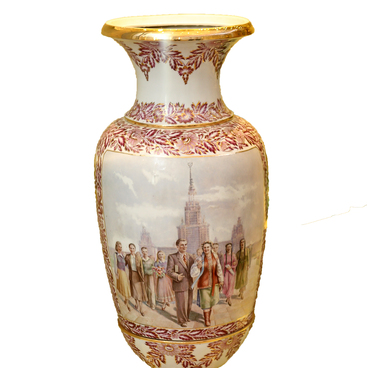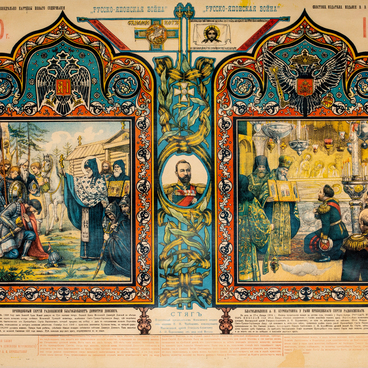The exhibition features a campaign leaflet issued for the only national referendum in the history of the Soviet Union which took place on March 17, 1991. The referendum included one question: ‘Do you consider it necessary to preserve the Union of Soviet Socialist Republics as a renewed federation of equal sovereign republics where human rights and freedoms of any nationality will be fully guaranteed? ’
The Government decided to hold a referendum due to the fact that in the early 1990’s the country was facing active disintegration processes. There came a chain of the so-called “parades of sovereignty”, and some republics of the USSR challenged the priority of the legislation of the Soviet Union over the republican laws.
The economic situation in the Soviet Union deteriorated sharply because some republics refused to pay taxes to the union budget. Six republics announced the establishment of sovereignty. These were Lithuania, Latvia and Estonia, as well as Moldova, Armenia and Georgia. In these republics, the referendum on March 17 was just a formality: central electoral commissions were not formed there, but everyone could vote in military units or at enterprises.
Before the referendum, the authorities had planned to expand the rights of the Union republics, but first decided to bring up for discussion the issue whether people wanted the USSR to continue as such.
By the 1990s, approximately 80% of the population, or about 185 million people, had the right to vote in the USSR. More than 148 million of them participated in the referendum. About 113 million, or 76% of all those who spoke out, voted for the preservation of the Soviet Union.
Nevertheless, on December 8, 1991, the founders of the USSR, that is, the heads of the Republic of Belarus, Ukraine and the RSFSR, signed a document called The Belovezha Accords. Contrary to the results of the referendum, this document put an end to the Soviet Union.
On December 21, in Alma-Ata, the heads of Armenia, Kazakhstan, Uzbekistan, Azerbaijan, Kyrgyzstan, Tajikistan, Moldova, and Turkmenistan signed the Declaration on the Formation of the CIS. Thus, these states also recognized the Belovezha Accords.
The Government decided to hold a referendum due to the fact that in the early 1990’s the country was facing active disintegration processes. There came a chain of the so-called “parades of sovereignty”, and some republics of the USSR challenged the priority of the legislation of the Soviet Union over the republican laws.
The economic situation in the Soviet Union deteriorated sharply because some republics refused to pay taxes to the union budget. Six republics announced the establishment of sovereignty. These were Lithuania, Latvia and Estonia, as well as Moldova, Armenia and Georgia. In these republics, the referendum on March 17 was just a formality: central electoral commissions were not formed there, but everyone could vote in military units or at enterprises.
Before the referendum, the authorities had planned to expand the rights of the Union republics, but first decided to bring up for discussion the issue whether people wanted the USSR to continue as such.
By the 1990s, approximately 80% of the population, or about 185 million people, had the right to vote in the USSR. More than 148 million of them participated in the referendum. About 113 million, or 76% of all those who spoke out, voted for the preservation of the Soviet Union.
Nevertheless, on December 8, 1991, the founders of the USSR, that is, the heads of the Republic of Belarus, Ukraine and the RSFSR, signed a document called The Belovezha Accords. Contrary to the results of the referendum, this document put an end to the Soviet Union.
On December 21, in Alma-Ata, the heads of Armenia, Kazakhstan, Uzbekistan, Azerbaijan, Kyrgyzstan, Tajikistan, Moldova, and Turkmenistan signed the Declaration on the Formation of the CIS. Thus, these states also recognized the Belovezha Accords.

